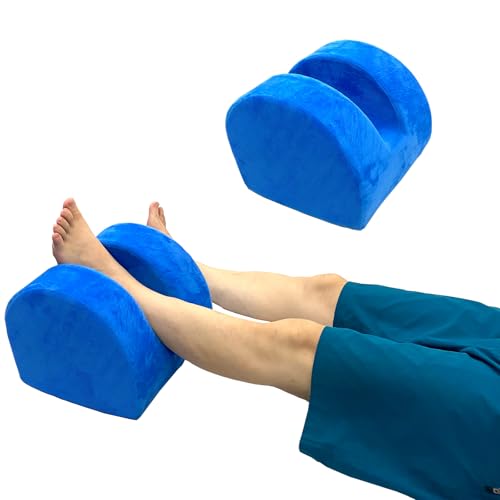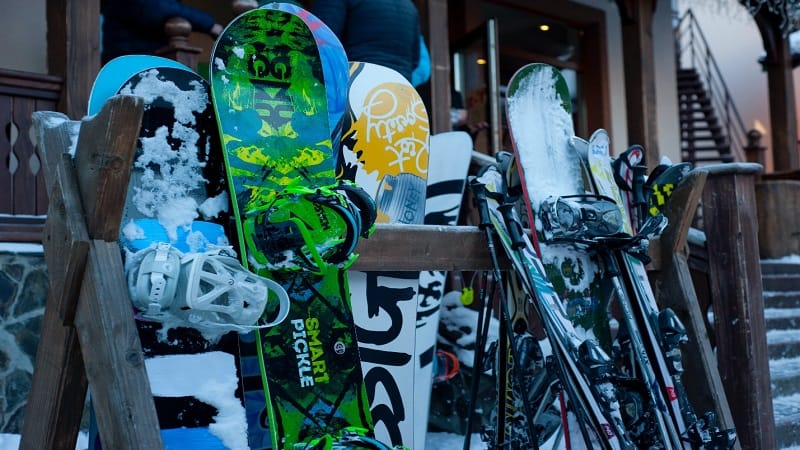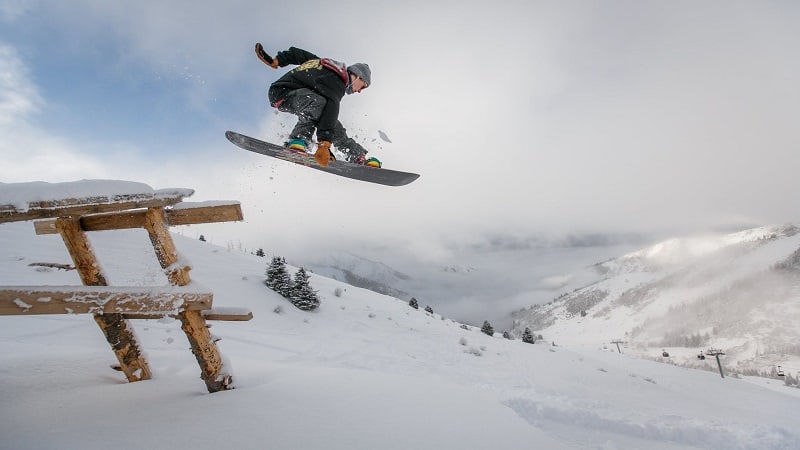So you’ve had a knee replacement and you’re itching to get back on your snowboard? You’re probably wondering if it’s even possible, right? Let me reassure you, it absolutely is! However, there are some essential factors to consider before hitting the slopes post-surgery.

Firstly, remember that everyone’s recovery process is different. While some folks might be ready to strap on their boards within a few months of surgery, others may need more time. It’s crucial to listen to your body – don’t push yourself too hard too soon!
Moreover, it’s really important to have realistic expectations about what you can handle after such a major surgery. Yes, you’ll likely be able to snowboard again but maybe not quite with the same intensity or frequency as before. It’s all about finding a balance that works for your new knee while still satisfying your love for the sport.
Remember: patience and perseverance are key in this journey back onto the snow-covered mountains! Rest assured though; with careful planning and preparation, you’ll find yourself carving down those hillsides once more!
Understanding Knee Replacement Surgery
Let’s dive right into what knee replacement surgery is all about. Often, it’s considered as the last resort for those dealing with severe knee pain or stiffness which hampers their daily life activities. Now, you might be wondering, “What does the procedure entail?” Well, in a nutshell, it involves removing damaged parts of the knee joint and replacing them with artificial parts made from metal and plastic.
You’re probably thinking that sounds like a major procedure – and you’d be right! It’s performed under general anesthesia (meaning you’ll be fast asleep) and typically takes between 1 to 3 hours. It may sound daunting but remember, this isn’t something doctors decide on lightly. They only recommend it when other treatments such as medications or physical therapy haven’t provided enough relief.
Now let’s get down to some numbers to give you a better idea of what we’re talking about here:
| Number of Knee Replacements | Average Age |
|---|---|
| 600,000 per year in US | 70 years old |
That’s quite a lot right? This shows how common knee replacement surgeries are especially among older adults.
What happens after the surgery? You’re likely going to spend a few days in the hospital followed by several weeks of rehabilitation. This can include physical therapy sessions where trained professionals help you regain strength and mobility in your new knee.
But here’s where things get interesting for our snowboarding enthusiasts out there: After recovery, most people are able to return to their normal activities – yes including sports! So if you’ve been sidelined because of your knee problems and itching to get back on your board – take heart! A successful knee replacement could mean making fresh tracks through powder snow once again!
Remember though, every case is unique and while many find success with this surgery others might face complications or difficulties during recovery. Always consult with healthcare professionals to get a clear understanding of what’s best for your specific situation.
Challenges of Snowboarding After Knee Surgery
You’ve conquered the knee replacement surgery. You’re feeling stronger, more agile, and you can’t wait to get back on your snowboard. But before you strap in and hit the slopes, there are some challenges you should be aware of.
First off, snowboarding is demanding on your knees. It requires a lot of twisting and turning which can put strain on your new joint. For this reason, it’s important to take things slow as your body adjusts to the changes.
Let me give you an example: Let’s say a typical run down a slope lasts about 5-10 minutes for an experienced boarder. Now imagine doing that multiple times in one day! That’s quite a workout for any knee – let alone one that’s just had major surgery!
Here are some quick stats:
| Average Run Time | Number of Runs per Day |
|---|---|
| 5-10 minutes | 8-12 runs |
Now don’t get too worried! There’s good news too. With proper preparation and precautions (like warming up properly, wearing supportive equipment), many people find they’re able to return to snowboarding after knee replacement.
Another challenge lies in overcoming fear or apprehension about re-injury. Your mind might be playing tricks on you, making you overly cautious or hesitant while boarding. This is completely normal but could potentially affect your performance.
Lastly, remember that recovery times vary greatly from person to person depending upon various factors like age, overall health status etcetera.
- Age
- Overall health status
- Rehabilitation progress
So yes, it won’t be all smooth sailing but with patience and determination; odds are high that you’ll soon be carving down those mountains once again!
Benefits of Physical Therapy for Knee Rehabilitation
So you’ve just had your knee replaced and you’re eager to hit the slopes again. That’s great! But before strapping on that snowboard, let’s consider a crucial step in your recovery journey – physical therapy.
Why is physical therapy so important after a knee replacement? Well, it’s all about getting back mobility and strength. Your new knee needs time to adjust and learn how to work with the rest of your body. Physical therapy sessions offer that much-needed opportunity to retrain your muscles and joints.
Here are some benefits that you can look forward to:
- Increased strength: After surgery, it’s common for your leg muscles to lose some strength. A good physical therapist will guide you through exercises designed specifically to regain this lost power.
- Improved flexibility: Yes, flexibility matters even in snowboarding! The more flexible you are, the better control you’ll have over your board.
Let me share an interesting statistic with you:
| Year | Number of People Who Benefited from Physical Therapy Post Knee Surgery |
|---|---|
| 2019 | 1 million |
Clearly, there’s something beneficial happening here!
But wait – there’s more! Engaging in regular physical therapy also helps reduce pain and swelling after surgery. So not only does it help get you back on the slopes faster but also ensures a smoother overall recovery process.
Physical therapists aren’t just exercise instructors; they’re professionals trained in human anatomy and physiology. They understand how our bodies work and recover post-surgery. So remember, each session brings you one step closer to carving up those hills again!
To sum up this section without saying “overall” (wink wink), think of physical therapy as the bridge between surgery success and return-to-sport triumphs. It might seem challenging at first but stick with it – because we know there’s nothing quite like that rush of slicing down a snowy mountain!
Appropriate Time to Return to Snowboarding Post-Surgery
Pacing yourself after a knee replacement surgery is essential. You’re probably itching to get back on your snowboard, but it’s crucial not to rush things. According to medical professionals, the average recovery time for a knee replacement surgery is about three months. However, this does not necessarily mean you’ll be carving up the slopes just yet.
Your body needs time to heal and adapt after such an invasive procedure. It’s during this period that you’ll need intensive physical therapy sessions to regain strength and flexibility in your new knee joint.
| Average Recovery Timeline | Action Required |
|---|---|
| 0-3 Months | Rest & Physical Therapy |
| 3-6 Months | Low Impact Exercise e.g., walking |
| 6+ Months | Gradual return to high impact activities e.g., snowboarding |
Keep in mind that every individual recovers at their own pace. While some might feel ready for action within six months, others may need up to a year before they can safely return to intense sports like snowboarding.
Listening closely and honestly to your body is key here. If you start experiencing pain or discomfort while practicing, it could be a sign that you’re pushing too hard too soon. Remember: slow and steady wins the race!
There are also precautionary measures you can take when returning back into the sport. Wearing protective gears like knee braces or pads can provide additional stability for your new joint while minimizing potential injuries.
- Regular check-ups with your orthopedic surgeon
- Consistent physical therapy sessions
- Taking prescribed medication as needed
- Following a balanced diet for overall health
In conclusion, returning back into snowboarding after undergoing knee replacement surgery demands careful consideration of many factors including your personal recovery timeline, bodily responses and necessary precautions taken during practice sessions.
Safety Measures While Snowboarding with a New Knee
Embarking on the slopes after a knee replacement is an exciting prospect! But it doesn’t come without its fair share of responsibilities. Your safety is paramount, and taking precautionary steps can make your snowboarding experience a thrilling yet secure one.
First things first, ensure you’ve been given the green light from your doctor. They’ll know if your knee has healed well enough to withstand the pressure that comes with snowboarding. It’s not just about feeling ready; it’s about being medically cleared too.
Next up, gear up right! Wearing protectors like knee pads can help safeguard your new knee against any possible trauma. Don’t forget that helmet either – we’re talking overall protection here!
Just as crucial is warming up before hitting the slopes. A good warm-up session increases blood circulation and prepares your body for physical activity, reducing the risk of injury.
Also, consider taking some snowboarding lessons especially tailored for people who’ve had joint replacements. You’ll learn how to navigate safely and effectively without putting undue stress on your new knee.
Finally, listen to your body! If you feel any discomfort or pain while snowboarding, take a break immediately. Ignoring these signs could lead to serious complications down the line.
So remember:
- Get medical clearance
- Gear up appropriately
- Warm-up before starting
- Consider specialized lessons
- Listen to YOUR BODY
With these safety measures in place, you’re all set for an amazing time snowboarding with your new knee!
Best Equipment for Snowboarders After Knee Replacement
Hey there, thrill-seeker! If you’ve recently had a knee replacement and are itching to hit the slopes again, you’re probably wondering about the best equipment to use. It’s key to keep that new knee safe while still enjoying your passion for snowboarding.
First off, let’s talk about bindings. Bindings with canting can be your knee’s best friend post-surgery. What’s canting? Well, it’s a slight angling of your footbed which helps align your joints – ankles, knees and hips – when in riding stance. This alignment reduces stress on your joints making it easier on your replaced knee.
Next up: boots. Comfort is king here but focus should also be on supportiveness and adjustability. Boots with moldable liners will provide that personalized fit for comfort while boa lacing systems offer easy adjustment – critical when dealing with swelling or discomfort in the surgical area.
And don’t forget about protective gear! Investing in some quality padded shorts and kneepads can give you extra confidence as you get back out there. Padded shorts cushion falls while kneepads safeguard against any unexpected impacts to those precious knees.
Finally, consider a balance training board for off-the-snow practice. These boards help improve core strength and stability – both crucial elements in reducing strain on that new knee of yours.
So remember folks: keep safety in mind first as you gear up for snowboarding after a knee replacement; select supportive bindings and boots, invest in protective gear, and consider tools like balance training boards to strengthen stability muscles. Happy shredding!
Personal Stories: Successful Returns to the Slopes Post-Knee Replacement
So, you’ve had a knee replacement and now you’re wondering if you’ll ever get back on your snowboard again. Well, let’s dive into some heartening personal stories of folks who didn’t let their new knee stop them from shredding the slopes.
Take Jim, for example. At 65 years old, he thought his snowboarding days were over after undergoing a total knee replacement. But guess what? Just six months post-surgery, he was back on his board ripping through fresh powder! He credits his swift return to a diligent physical therapy routine and an unwavering determination.
And then there’s Lisa. She underwent her first knee replacement at just 45 due to severe arthritis damage. The doctors weren’t sure she’d be able to return to extreme sports like snowboarding. However, Lisa is not one for being told ‘no’. After lots of rehab and even more patience, she made it back onto her board less than a year post-op!
Let’s not forget about Mark too! Mark used to competitively snowboard in his youth until he required a full knee replacement at age 70. Defying all odds, three months after surgery he was back doing what he loved – carving down mountainsides with style and confidence.
But these are just anecdotes right? What about the actual numbers? Well here they are:
| Average Time Till Return To Sport | |
|---|---|
| Jim | 6 Months |
| Lisa | Less Than A Year |
| Mark | 3 Months |
You see there’s no ‘one size fits all’ when it comes to recovery timeframes; everyone heals at their own pace.
- Focus on your physiotherapy.
- Keep positive.
- Listen to your body.
Remember these tips as they’ll go along way in aiding your journey back to the slopes. After all, snowboarding post-knee replacement isn’t just possible; it’s a reality for many!
Conclusion: Embracing the Future of Snowboarding after Knee Replacement
You’ve made it to the end, my friend. You’re now equipped with a wealth of knowledge about snowboarding after knee replacement. It’s clear that this isn’t just possible but can be an enjoyable and thrilling part of your life post-surgery.
Remember those key points we discussed? Let’s take a quick recap:
- Consult with your doctor before hitting the slopes.
- Make sure you’re fully healed and have completed all necessary rehab.
- Start slow and gradually increase your intensity.
- Listen to your body at all times.
These nuggets of wisdom will help keep you safe as you carve up those mountains once more.
But let’s not stop there. It’s time to embrace the future of snowboarding after knee replacement. Innovative technologies are continually improving our abilities to bounce back from surgery stronger than ever before. Newer, more effective rehabilitation techniques are being developed, and advancements in prosthetic design mean even smoother rides down the mountain.
So what does this mean for you? Well, it means that knee replacement doesn’t spell an end to your snowboarding days. Far from it! Instead, it’s simply a new chapter in your adventure-filled story – one where technology plays a vital role in helping you achieve feats previously thought impossible.
But most importantly, remember this: Your journey is unique. There’s no set timeline or guaranteed results when it comes to healing and getting back on the board post-knee replacement. However, armed with determination and the right mindset (plus a little patience), there’s no telling how far you’ll go!
Stay positive, stay focused, and here’s to embracing the future of snowboarding — titanium knees and all!
















